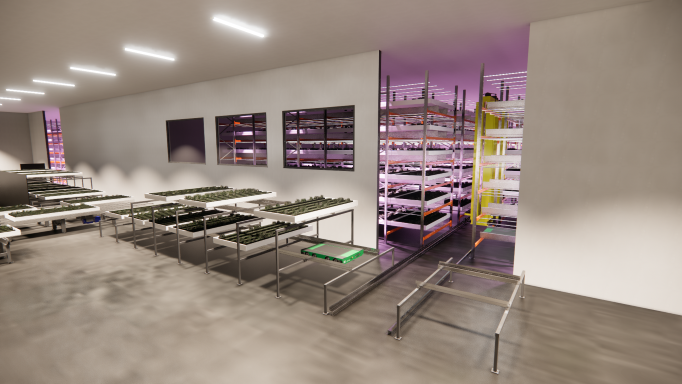SEC Storage partners with vertical farming specialist
11th February 2022

SEC Storage has partnered with a leading UK Vertical Farming specialist CambridgeHOK for the launch of a new ‘concept to completion’ package, providing investors and retailers with their own fully automated indoor growing facilities.
Supply chain issues caused by Brexit and a global pandemic combined with a growing population, estimated by the Office of National Statistics to be 72 million by 2041 in the UK alone, has directed the spotlight on alternative methods for more local, sustainable food production.
Already a proven technology in many environments, Vertical Farms have demonstrated that they can produce high-quality, low-emission, competitively priced food in a fraction of the space of a traditional farm.
However for Vertical Farming to be successful and a sustainable source of food production in the UK, it’s vital to demonstrate how automation and the efficient use of space can streamline operations and SEC Storage’s data-driven approach combined with its innovative machine learning and AI capabilities are well matched to the next phase of the Vertical Farming industry development.
SEC Storage managing director Harry Watts commented: “Working with Vertical Farming specialist CambridgeHOK to apply the principles of logistics industry automation alongside our unique data-driven actuation models, provides a compelling offering to investors, food producers and retailers, and clearly demonstrates that investment in this growing sector is a viable and attractive option.”
Patrick Harte, joint managing director of CambridgeHOK said: “Automation and scalability are the two key factors behind our concept model which align perfectly with SEC Storage’s expertise in space optimisation and as an automated warehousing specialist.
“Together we can develop and deliver large-scale Vertical Farming solutions that could deliver higher quality crops, on an industrial scale, in a fraction of the footprint when compared with traditional methods.”

